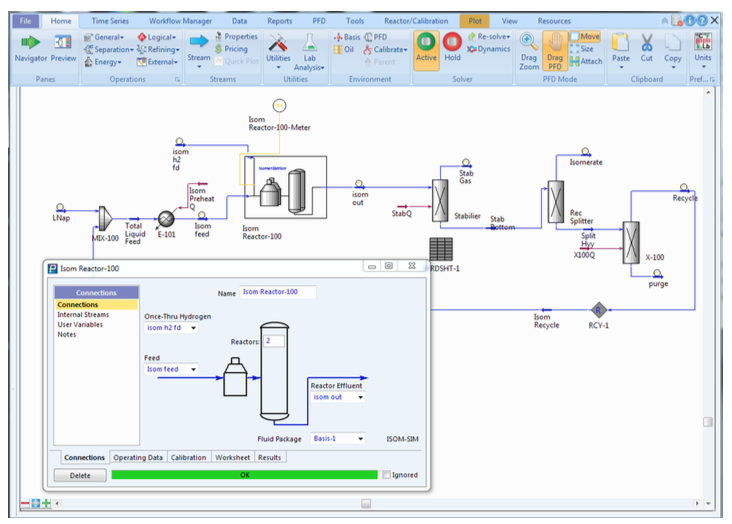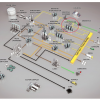ISOM-SIM™
Are you trying to optimise gasoline blending against stringent sulphur and benzene specifications? How do you determine which temperatures to operate your isomerisation reactors at to maximise isomerisation and minimise cracking or other undesired reactions?
KBC’s kinetic isomerisation model ISOM-SIM has been used to help refiners just like you to answer these and many other questions. ISOM-SIM enables you to examine the effect of changes in feed rate and composition, operating variables, and feed hydrogen quality and quantity on yields, product qualities, and operating economics.
ISOM-SIM has been used successfully to:
- Generate and maintain LP vectors
- Analyse the impact of process changes on performance
- Optimise unit operation against real constraints
- Track and trend unit performance
ISOM-SIM can be used in standalone mode to investigate the performance of the isomerisation unit in isolation, in conjunction with KBC’s kinetic catalytic reforming model Ref-SIM to mitigate benzene in final gasoline, or as part of a refinery wide model that investigates the complex relationships between different processing units and the macro effect of changes in the isomerisation unit on the entire refinery performance and final product blending.

















